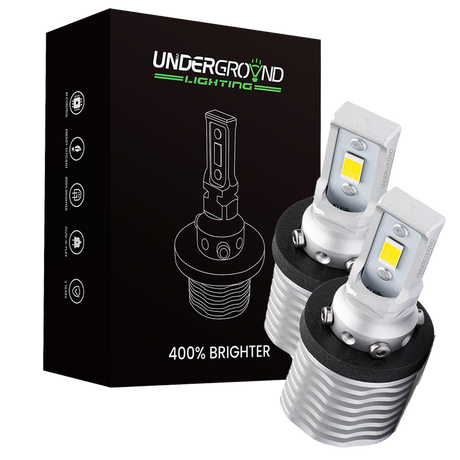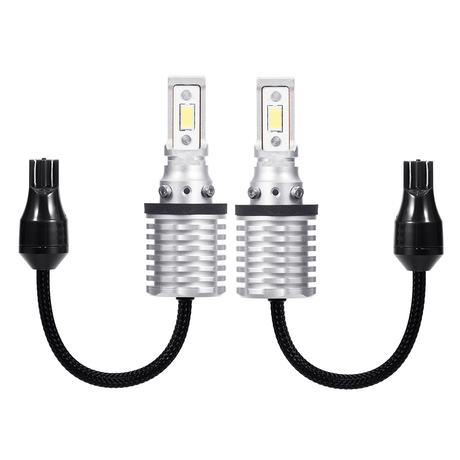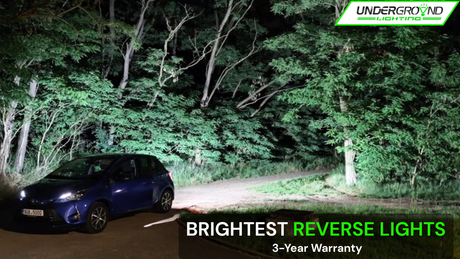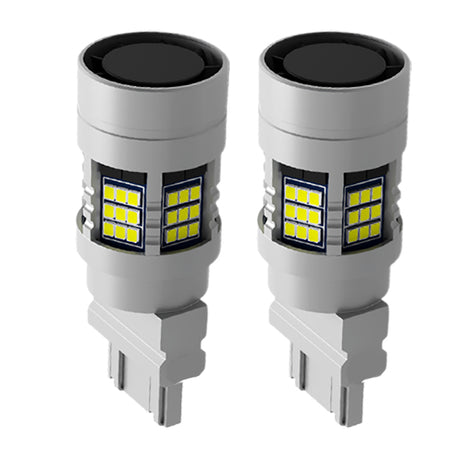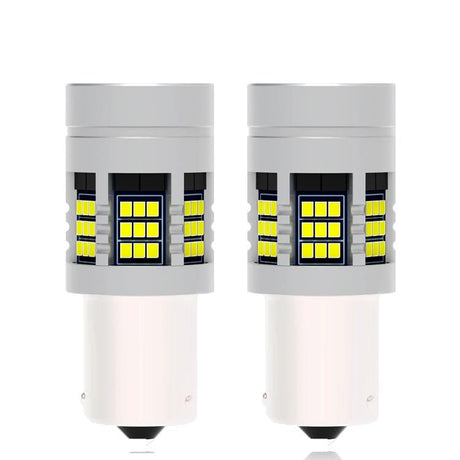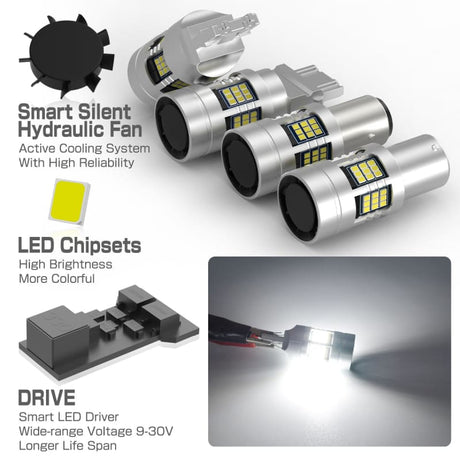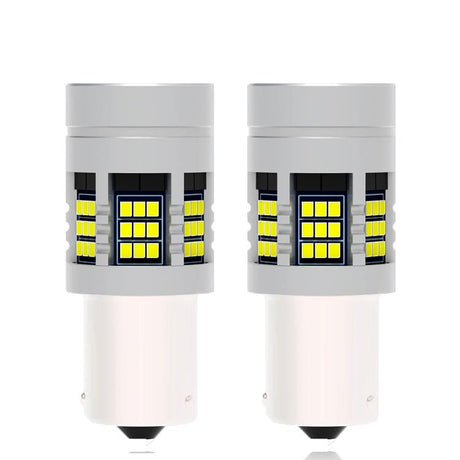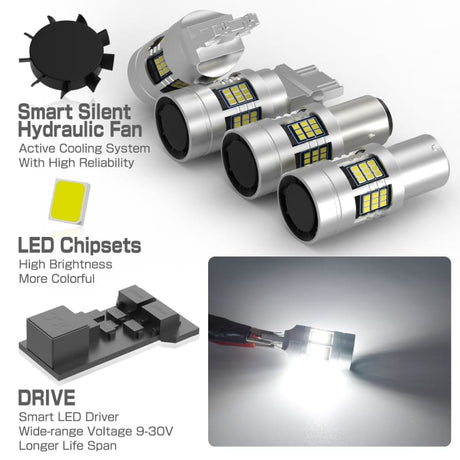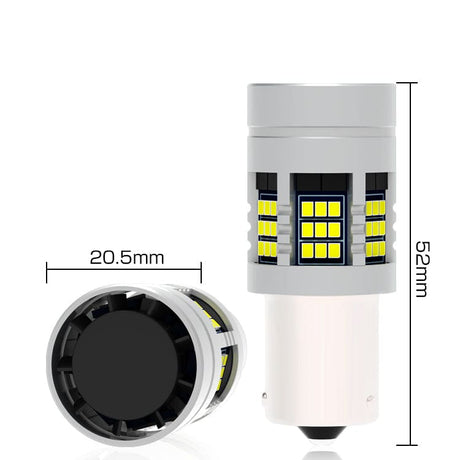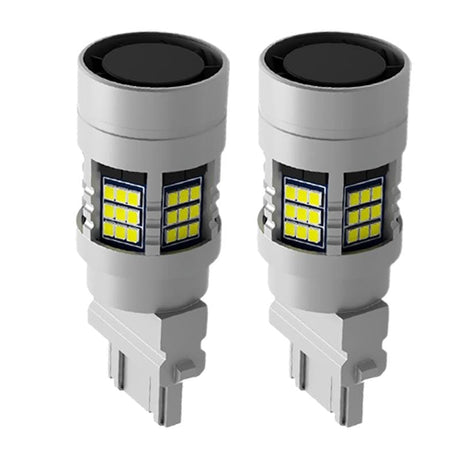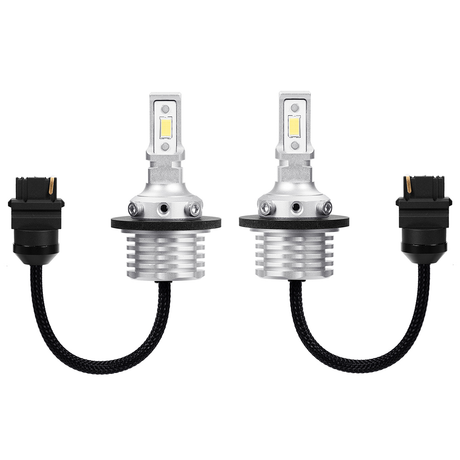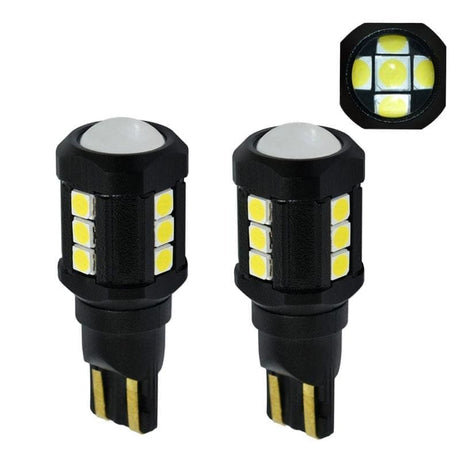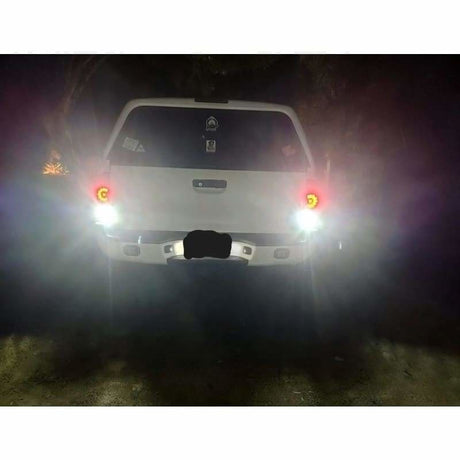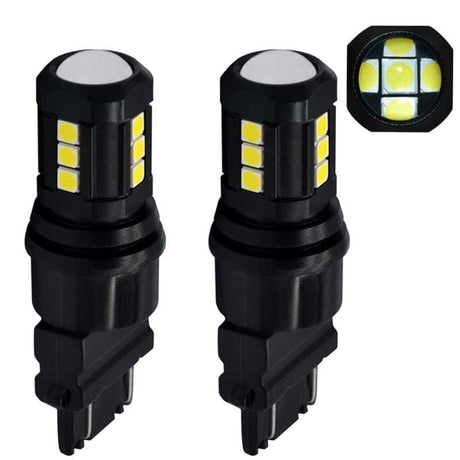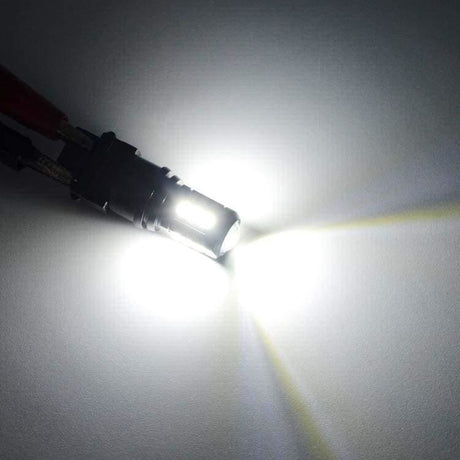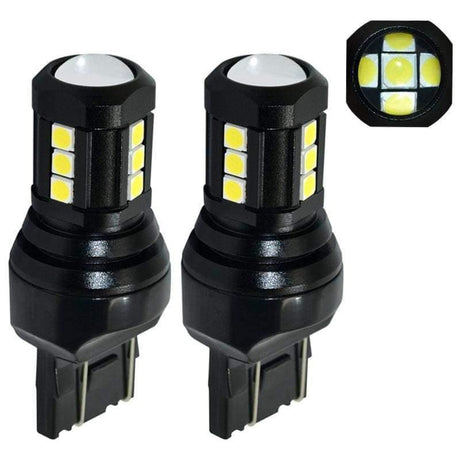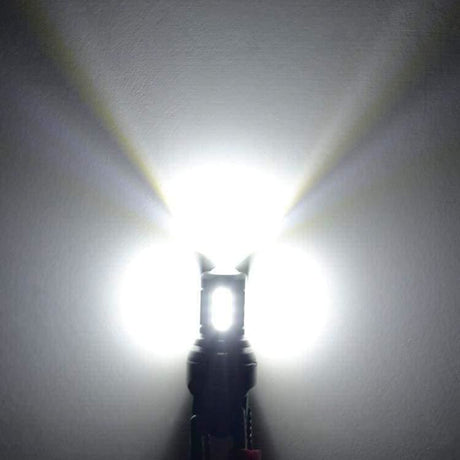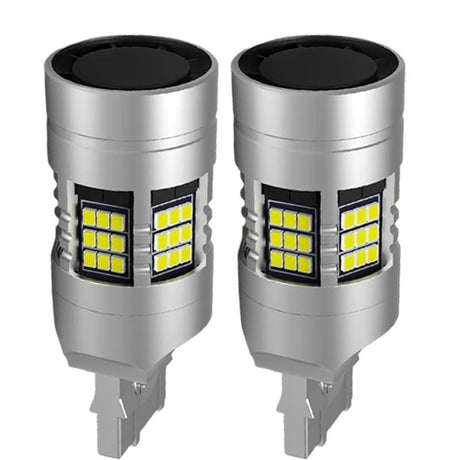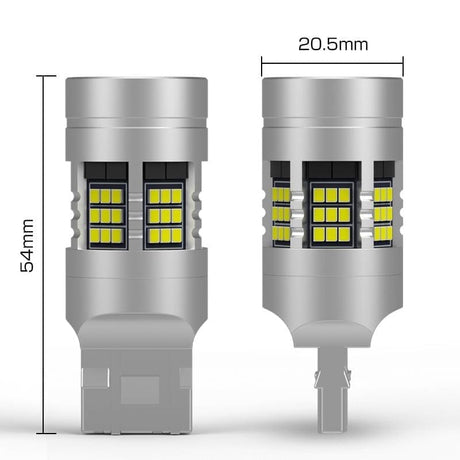Do LED lights work with reverse polarity?
LED reverse lights need to be installed with the correct polarity to work properly. Each bulb has clear positive and negative markings, and our plug-and-play designs make it virtually impossible to connect them incorrectly. If you accidentally reverse the connections, the light simply won't turn on – no damage done. Just flip the connector around, and you're good to go.
Do LED reverse lights need resistors?
Most modern LED reverse lights, including all the ones we sell, have built-in resistors and load balancers. This means you won't need any additional components for installation. However, if you notice any flickering or warning messages on your dashboard, we include load resistors with every kit just in case your vehicle needs them.
What are the brightest LED reverse lights you can get?
Some of our LED reverse lights produce up to 1200 lumens of crisp white light – that's about three times brighter than standard halogen bulbs. While even brighter options exist, we've carefully selected this brightness level to provide excellent visibility without creating unsafe glare for other drivers. The focused beam pattern ensures all that light goes exactly where you need it when backing up.
Do I need a relay for LED reverse lights?
Generally, reverse lights don't require load resistors since they're not monitored by the vehicle's computer system, like turn signals or brake lights. Our LED reverse lights are designed to work straight out of the box with your vehicle's existing wiring. They draw the correct amount of power and work seamlessly with your car's electrical system without any additional components needed.
How do I install LED reverse lights?
Installing LED reverse lights is a straightforward process that most people can complete in minutes.
- Find your reverse light housing - it's usually part of your rear light assembly.
- Remove the old bulb and simply plug in your new LED reverse light, making sure the connections are secure.
- Before closing everything up, test the lights by putting your car in reverse to ensure they're working correctly.
If you're not comfortable with DIY installation, any auto shop can handle this quick upgrade for you.
Are brake lights and reverse lights the same?
While these terms are often confused, brake lights and reverse lights have completely different functions. Brake lights are red and illuminate when you press the brake pedal, alerting other drivers that you're slowing down or stopping. Reverse lights are white and automatically turn on when you put your vehicle in reverse, signaling to others that you're backing up or about to do so.
How can I make my reverse lights brighter?
The most effective way to enhance your reverse lighting is to upgrade to LED bulbs. Traditional halogen bulbs naturally dim over time and develop a yellowish tint that reduces visibility. LED reverse lights provide significantly brighter illumination that maintains its intensity over time. If you've already upgraded to LEDs but aren't satisfied with the brightness, have a professional check the installation and connections to ensure they function at full capacity.
Can you drive without reverse back up lights?
While reverse lights aren't legally required for personal vehicles, driving without them puts both you and others at unnecessary risk. Even though they're considered "optional" equipment, functioning reverse lights are essential for safe maneuvering, especially in dark conditions or crowded areas. The minimal cost and effort of maintaining working reverse lights far outweigh the potential consequences of an accident caused by poor visibility while backing up.
How do you hook up a reverse light to a backup camera?
Connecting a reverse light to a backup camera will improve your overall visibility and safety while backing up. To do this, mount your backup camera, disconnect the car battery for safety, install the camera according to manufacturer specifications, and then reconnect the battery. However, since this involves working with your vehicle's electrical system, we strongly recommend having a professional handle the installation to ensure everything works correctly and safely.
How do I change an LED backup light bulb on a truck?
While the exact process will be different depending on the vehicle model, changing a reverse light follows a standard procedure:
- Access your taillight assembly, typically secured by screws or push rivets.
- Once removed, you can reach the reverse light socket. Carefully disconnect the electrical connector by pressing the release clips and pulling it free. While working, place the entire assembly on a clean, flat surface.
- Install the new light, ensuring proper connection and orientation.
If you're unsure about any step in the process, our lighting professionals at Underground Lighting are here to help – just reach out by phone, email, or chat for expert guidance.

